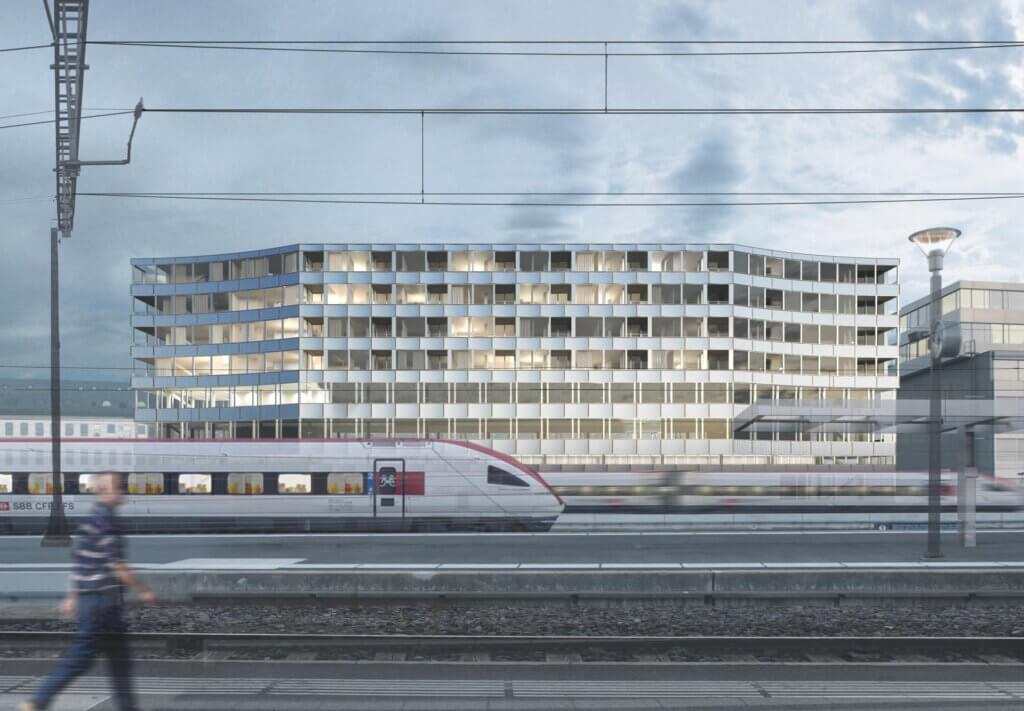
The Swiss Federal Railways (SBB) will be allowed to significantly increase its electricity prices. However, the entire system for traction current is on the brink of collapse.
Swiss Federal Railways and the Federal Office of Transport (FOT) have agreed to raise the price of traction current. The SBB wanted to achieve a doubling from 10.5 to 20.5 Rappen per kilowatt hour.
In the end, however, it went up to ‘only’ 13.5 Rappen per kilowatt hour, as the BAV announced.
Reserve for shortages
That is still almost 30 percent of inflation. The FOT describes the increase, nevertheless inappropriately, as ‘moderate.’
Finally, however, the summer drought, the shutdown of French nuclear power plants and the war in Ukraine had led to massively higher energy costs.
In addition, SBB also procures electricity on the market in order to have a reserve of its own electricity for any possible shortage – in the form of full reservoirs.
Investment figures
The increase, he said, meets the legal requirement that traction power costs must be covered. This also includes the follow-up costs for the investments to maintain the traction current network.
According to the federal office, the measure corresponds to a surcharge of around 70 million Swiss francs per year.
SBB Energie expects a deficit of180 million Swiss francs this year. For 2023, and probably for the following years, energy prices are expected to remain at a high level, the FOT added.
Cut into their own flesh
Such increases are then passed on to the purchasers of the traction current, i.e. the railroad companies have to bear them. The FOT envisages that the increase will be passed on to the various transport divisions on a differentiated basis.
SBB itself is affected twice: with its own passenger traffic and with SBB Cargo, as it announced itself. Nevertheless, the state-owned company welcomes the price increase.
In long-distance traffic the 30 percent increase will be passed on in full. In regional and freight traffic it goes partially up, that is, by 1 centime or ten percent.
Fixed ticket prices
So it also affects the population directly. In passenger transport, however, the prices for 2023 have already been determined. They will remain stable and will not be increased. 2024 is still written in the stars.
Depending on the type of transport, the train path price will increase by 2 to 3 percent as a result of this massive increase. This is because it accounts for around a quarter of all the costs of a train.
The FOT expects companies in passenger and freight transport to compensate for part of the additional costs for traction current through energy-saving measures. In other words, price increases are only a matter of time.
Breakthrough 2024
SBB-Energie is responsible for the provision and supply of traction current on behalf of the BAV as system leader. For the most part, the company produces the electricity with its own hydroelectric power plants.
The company purchases part of its electricity from other producers or on the market. The figure here is around 10 percent.
Depending on the further development of energy prices, the FOT will decide next year on adjustments as of the end of 2023, i.e. probably increases.
Stormy weather from 2025
If the price level remains at the current level, it will have to be examined which transport segments in rail transport would be affected by the higher traction current prices in 2024, it was said.
However, a new business model for the supply of traction current is being worked out for 2025 anyway, because the whole thing apparently only works in “good weather”.
By 2025, all traction current is to come from renewable sources anyway. In addition to certificates of origin from renewable energy supplies, SBB will also physically procure electricity so that the missing 10 percent can be obtained from its own plants or at least from plants under contract.
11/29/2022/kut./ena.





